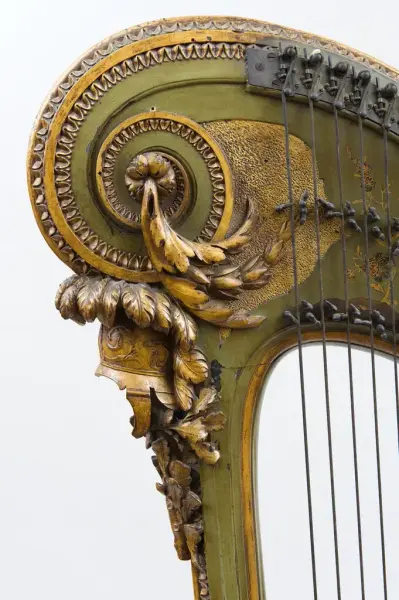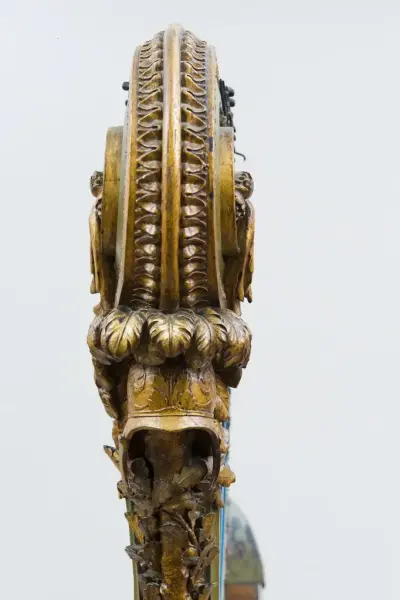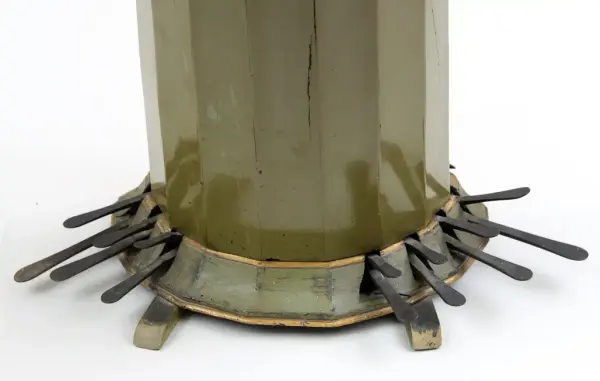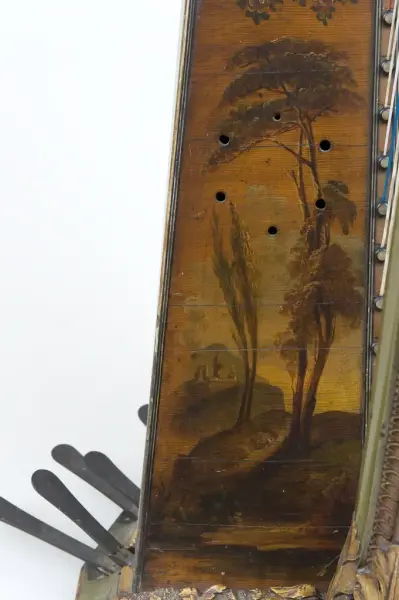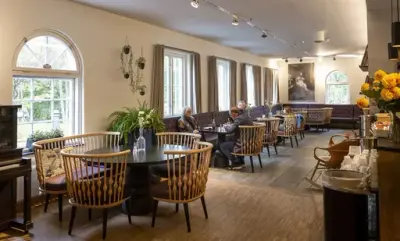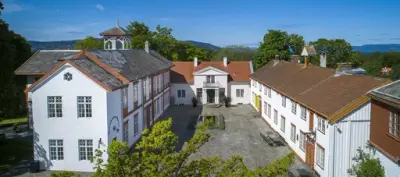The sound of the harp has accompanied man throughout the ages. In the firelight, in grand halls and temples, in concert halls, fine living rooms and simple cottages, the harp has captured people's souls and opened up a world filled with gods and demons.
But this queen of instruments comes from humble beginnings - from the hunter's taut bowstring. Even after more than 5,000 years of harp instruments, we are still discovering new sounds and dressing her up in new costumes.
In this exhibition, we have found harp instruments of all shapes and sizes to tell eternal stories about man and music. We promise you unique instruments, captivating stories and things to explore, experience and ponder!
- 1/1
The exhibition is open at Ringve Music Museum
Cousineau's adventurous harp
The most notable eighteenth-century trendsetter was Queen Marie Antoinette. She set the standard for what was considered popular among French women. Because the queen was a harpist herself, the harp literally inaugurated a new golden era. Harps were decorated in regal style with angels and gold, and they went from being an instrument of upper-class men to a trendy musical instrument for women.
Harp-maker Georges Cousineau was one of the craftsmen who made instruments for the royal court. In 1782, he came up with a brilliant technical concept whereby fourteen pedals allowed the harpist to play in all keys. The first modern harp was born, and it could now keep pace with other modern instruments like the fortepiano. Nevertheless, forty more years would pass before the pedal harp became a success. Later, piano maker Sébastien Érard patented a harp that could play in all keys and got the credit for inventing the modern harp. Cousineau's 14-pedal harp stood in Erard’s workshop as the prototype.
Shortly afterwards, the harp vanished for almost two centuries.
We know that it survived the looting of Versailles during the French Revolution, and that it wound up in Érard’s hands and survived two world wars. Rumours circulated about its whereabouts, and it was allegedly seen in 1957. It wasn’t before 2008 that the harp was identified in a living room in the town of Versailles only a few kilometres from the royal palace. Now Cousineau’s 14-pedal harp is on display here at Ringve.
- 1/4
- 2/4
- 3/4
- 4/4

